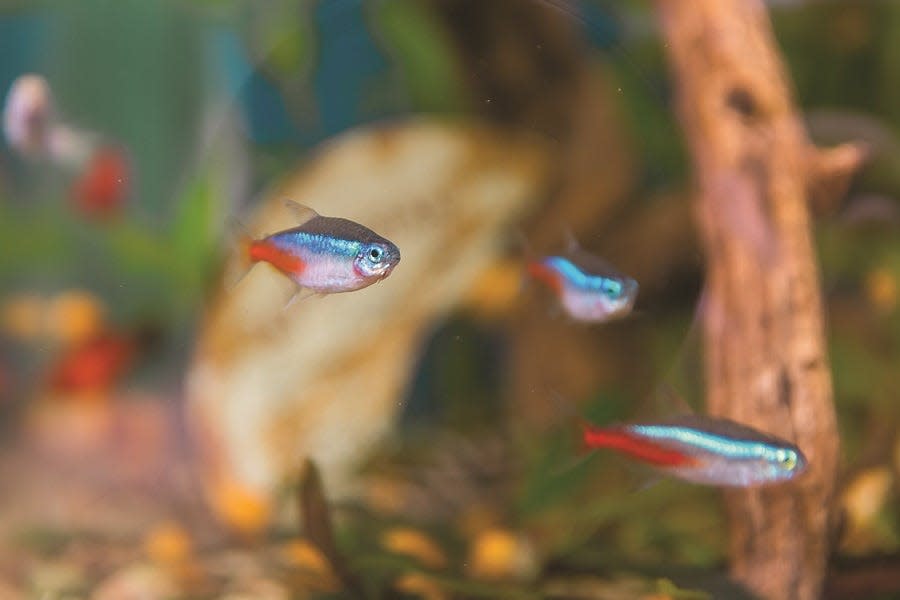Think keeping fish is easy? Here are the basics on choosing and caring for fish

If you’re considering getting fish because you don’t want a high-maintenance pet, you may want to reconsider. Jessie Sanders, DVM, a certified aquatic veterinarian who practices in the San Francisco Bay area, says it’s a myth that fish are significantly less work than any other pet.
Certain fish can, however, be good choices for beginners. Sanders likes goldfish, betta fish and neon tetras. Goldfish are hardy, bettas need less space than goldfish and neon tetras are colorful and eight to 10 of them can do well together in a small tank. All of them still require basic care, though. Here’s what to know.
A goldfish is often a child’s first experience with pet care — I remember having one myself in grade school — but even though goldfish can tolerate a lot of beginner mistakes, they don’t always last long because people are unaware of their needs.
Take tank size. That cute little 3-to-5-gallon bowl you bought for your goldfish is really only good for transporting your new finny friend home, and maybe for a brief period afterward. Goldfish are messy, and they need a lot of space. A 20-gallon tank is a good starter size. A single goldfish can grow to the size of a dinner plate and may eventually need a 100-gallon tank.
Bettas also suffer from the mistaken belief that they don’t need much space. They can stay in a smaller space than a goldfish, but they have other needs.
“A lot of owners don’t put them in a tank with a filter and a heater, and without those, their lives can be significantly shortened,” Sanders says.
For any fish, filters and regular partial water changes are important for good health. Poor water quality is one of the factors that can shorten the life of aquatic denizens. Just as humans don’t breathe as well in environments with polluted air, fish need healthy water to survive and thrive. Swimming around in water filled with their own waste and food remnants isn’t good for them.
Performing partial water changes eliminates waste, replenishes some of the micro minerals in the water and helps to keep the water’s pH level balanced. Depending on the number of fish in the tank and the size of the tank, Sanders recommends a 10% water change weekly or 25% every other week. If you’re concerned that you might not be doing sufficient water changes, she says it’s a good idea to regularly test the water chemistry, specifically pH carbon alkalinity and nitrate levels.
An important component of doing water changes is using a tap water conditioner, Sanders says. Look for one that says it treats chlorine and chloramine, which may be used by city tap systems to treat their water. Both are toxic to fish and can kill them.
When it comes to feeding fish, the standard advice to read the label applies. Fish thrive on protein, so the higher the levels of protein, the more rapidly you can expect your fish to grow, Sanders says. Avoid foods with excessive fat content — more than 8%. Fish in captivity don’t need high levels of fat unless they’re in a breeding program or are highly stressed, which they shouldn’t be.
Choose food based not only on the nutritional needs of your fish, but also the way that they feed. Factors include water temperature and whether fish primarily live on the bottom, mid-tank or just below the surface.
Finally, don’t expect to avoid vet visits. An annual exam can help to ensure that your fish is in good health, isn’t overweight, doesn’t have parasites and has appropriate water chemistry.
— Kim Campbell Thornton
Do you have a pet question? Send it to askpetconnection@gmail.com or visit Facebook.com/DrMartyBecker. Pet Connection is produced by veterinarian Dr. Marty Becker, journalist Kim Campbell Thornton, and dog trainer/behavior consultant Mikkel Becker.
This article originally appeared on South Bend Tribune: Pet Connection: Basics to know when choosing and caring for fish

